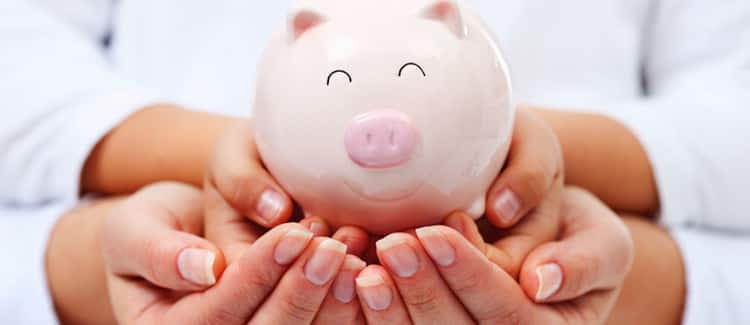House Rent Allowance (HRA)
House Rent Allowance (HRA) is a part of your salary to help you pay rent for your home. It also gives you a tax benefit if you meet certain conditions. The tax exemption depends on your salary, the rent you pay, and whether you live in a metro or non-metro city. By understanding HRA exemption rules, you can save money on taxes and manage your housing expenses better.
What is House Rent Allowance or HRA?
The HRA, in its full form, is the House Rent Allowance. It is included in your annual salary package and helps you reduce your tax liability while managing your housing costs. You can claim the HRA tax exemption only with the Old Tax Regime. This tax benefit is not available with the New Tax Regime.
HRA is not fully taxable. A portion of it can be exempt from taxes under Section 10(13A) of the Income Tax Act. The amount of tax you owe on HRA depends on several factors, including your basic salary, rent paid, and whether you live in a metro or non-metro city. An Old vs New Tax Regime Calculator can help you decide which regime provides better tax benefits, including HRA deductions.
Who Can Avail HRA Tax Exemption?
Tax deductions on HRA under Section 10 (13A) of the Income Tax Act can be claimed by meeting the following criteria:
-
Employment Status: You must be a salaried employee. Self-employed individuals, freelancers, or business owners cannot claim HRA tax benefits.
-
Rental Accommodation: You should be residing in a rented house or apartment. The property you rent should not be owned by you, your spouse, or your children.
-
Rent Payment: You must be actively paying rent to your landlord. Mere occupancy of a rented property without actual rent payment will not qualify you for HRA benefits.
**Note: If you are self-employed and pay rent, you may be eligible for tax deductions under Section 80GG of the Income Tax Act, subject to certain conditions. However, this is a different deduction and does not fall under the HRA category.
House Rent Allowance- HRA for Self-Employed Individuals
While salaried individuals often enjoy the tax benefits of House Rent Allowance (HRA), self-employed individuals and those without HRA from their employers find themselves in a different situation. However, Section 80GG of the Income Tax Act offers a valuable solution to help you reduce your taxable income.
Section 80GG allows you to claim a deduction for rent paid above a certain percentage of your income. This section can also be used to claim HRA tax exemptions for salaried employees who do not receive any HRA.
HRA for Salaried Individuals
The salaried individuals are eligible for HRA exemptions under Section 10 (13A) of the Income Tax Act. To claim HRA exemption, employees must submit rent receipts or rental agreements.
How to Calculate HRA and HRA Tax Exemption?
Understanding HRA and its tax implications is important for salaried individuals. While HRA is directly calculated by your employer, it's useful to understand the factors that are involved. Below are the factors:
-
Actual HRA Received: This is the fixed amount you receive from your employer as HRA.
-
Rent Paid: The actual rent you pay, excluding any additional charges like electricity or water bills.
-
City of Residence: The city where your rented accommodation is located. Different cities have different HRA exemption limits.
Calculating HRA Tax Exemption
To determine your HRA tax exemption, you'll compare three figures:
-
Actual HRA Received: The amount you receive from your employer.
-
50% of Basic Salary: For metro cities (like Delhi, Mumbai, Kolkata, and Chennai), you can claim up to 50% of your basic salary as HRA.
-
40% of Basic Salary: For non-metro cities, the limit is 40% of your basic salary.
The Lowest of the Three Amounts can be claimed:
-
Actual HRA received
-
50% of [basic salary + DA] for those living in metro cities (Delhi, Kolkata, Mumbai or Chennai)
-
40% of [basic salary + DA] for those living in non-metros
-
Actual rent paid (-) 10% of [basic salary + DA]
Example:
If you receive an HRA of Rs. 10,000 per month, your basic salary is Rs. 20,000, and you pay a rent of Rs. 12,000 per month in a metro city, the calculation would be:
-
Actual HRA Received: Rs. 10,000
-
50% of Basic Salary: Rs. 10,000 (50% of 20,000)
-
Rent Paid: Rs. 12,000
In this case, the least amount is Rs. 10,000. So, you can claim a tax deduction of Rs. 10,000 per month.
To simplify the calculation process, you can use an online HRA online calculator.
Conditions to Claim HRA Exemption
To claim an HRA exemption, you must fulfill specific conditions. Below are the conditions:
-
Residential Accommodation:
-
You must be residing in a rented house.
-
Owning your own house or living with family members disqualifies you from claiming HRA.
-
-
Actual Rent Payment:
-
You must have actually paid rent to your landlord during the financial year.
-
Proof of payment, like rent receipts or bank statements, is mandatory.
-
-
HRA Component in Salary:
-
Your salary slip must explicitly mention an HRA component.
-
Without an HRA component, you cannot claim the exemption.
-
-
Least of the Three Rules:
The HRA exemption is limited to the least of the following three amounts:
-
Actual HRA Received: The exact amount of HRA you receive from your employer.
-
50% of Basic Salary (Metro Cities): If you reside in a metro city, you can claim up to 50% of your basic salary.
-
40% of Basic Salary (Non-Metro Cities): For non-metro cities, the limit is 40% of your basic salary.
-
-
Proof of Rent Payment:
-
Retain rent receipts, rental agreements, or bank statements as proof of rent payment.
-
These documents are essential for potential audits.
-
What if We Do Not Get an HRA?
Self-Employed Individuals and Salaried Individuals Without HRA
If you're self-employed or a salaried individual who doesn't receive an HRA component in your salary, you can still claim a tax deduction under Section 80GG of the Income Tax Act. This section allows you to claim a deduction for rent paid, subject to certain conditions.
Combining HRA and Home Loan Interest
You can claim both HRA and a deduction on home loan interest, but there are specific conditions:
-
To Claim HRA:
-
Employment: You must be an employee.
-
HRA Component: Your salary should include an HRA component.
-
No House Ownership: You should not own a house in the city where you work.
-
Rent Payment: You must be paying rent for a house in the city where you work.
-
-
To Claim Home Loan Interest Deduction:
-
Home Loan: You must have taken a home loan.
-
Repayment: You must be actively repaying the home loan.
-
House Ownership: You must own the house.
-
Can We Claim Deduction and HRA on Home Loan Interest?
Yes, under specific conditions, you can claim both HRA and deductions on home loan interest in India. This combination can be a significant tax advantage for individuals who are both paying rent and have a home loan. Below are the key conditions:
-
You must be a salaried individual receiving HRA as part of your salary.
-
You must be residing in rented accommodation in the same city where you work.
-
You must have taken out a home loan for a property in your own name or jointly with your spouse.
-
Homeowners repaying a home loan and receiving HRA can use both house property-related tax benefits to lower their taxable income.
Tax Benefits on Both Home Loan Interest and Rented House
It is possible to claim tax benefits on both a home loan and a House Rent Allowance (HRA) if certain conditions are met.
-
HRA Exemption: If you stay in a rented house, you can claim HRA under Section 10(13A), subject to conditions.
-
Home Loan Benefits: Even if your house is not self-occupied (e.g., it is under construction, rented out, or located in another city), you can claim:
-
Interest on loan: Up to ₹2 lakh per year under Section 24(b).
-
Principal repayment: Under Section 80C, up to ₹1.5 lakh annually.
Note: This dual benefit applies when the house purchased on loan is not your primary residence and you live elsewhere in rented accommodation for work or other reasons. Proper documentation is required to claim these benefits.
How to Claim HRA Exemption When Living with Parents?
To claim HRA, even when living with parents, you'll need:
-
A formal rental agreement: This should specify the rent amount and the portion of the house you occupy.
-
Rent receipts: These should detail the amount paid, date, and signatures.
-
Proof of ownership: Your parents should have property documents.
-
Separate living space: Your occupied area should be distinct with a separate entrance and amenities.
-
Check Employer Guidelines: Consult your employer's HR department to understand their specific requirements for claiming HRA. Some employers may have additional forms or documentation to be filled out.
-
Document Submission: When filing your income tax return, include the rental agreement, rent receipts, and any other required documents.
Documents Required to Claim the HRA Exemptions
The employee must provide the following documents to claim the tax exemptions related to the House Rent Allowance:
-
Rent Receipts (Mandatory if rent exceeds ₹1 lakh annually).
-
Rent Agreement
-
Salary Slip
-
Landlord’s PAN (Required if annual rent is more than ₹1 lakh).
-
Letter by Landlord.
-
Proof of Payment Made
When To Ask for Landlord’s PAN Card?
If annual rent exceeds ₹1,00,000, the landlord’s PAN is mandatory to claim HRA tax exemption. If the landlord doesn't have a PAN, they must provide a self-declaration, as per Circular No. 8/2013, dated 10 October 2013.
Claim Deduction Under Section 80GG
If you're not receiving HRA from your employer or are self-employed, you can still claim a deduction under Section 80GG of the Income Tax Act, 1961. This section allows you to claim a deduction on the rent paid for your residence.
-
Eligibility Criteria:
-
You must be an individual taxpayer.
-
You, your spouse, or minor child should not own a house in the city where you work or reside.
-
-
Deduction Amount:
The deduction amount is the least of the following:
-
Actual Rent Paid: Minus 10% of your total income.
-
₹5,000 per month.
-
25% of Your Total Income.
-
-
Required Documents:
-
Rent Receipts: Obtain rent receipts from your landlord.
-
Rental Agreement: Maintain a copy of the rental agreement.
-
Form 10BA: Fill out this form and submit it along with your income tax return.
-
Date for Filing the ITR and Claiming the HRA Tax Exemption
-
ITR Filing Deadline: Usually July 31 of the assessment year (unless extended).
-
Late Filing: ITR can be filed until December 31 but with penalties.
-
HRA Exemption Claim: Must be included in the ITR filing for the relevant financial year.
-
Revised ITR: Corrections can be made by filing a revised return before December 31 of the same assessment year.
-
Supporting Documents: Keep rent receipts and other proofs handy in case of inquiries or audits.
HRA Exemption Calculator
An HRA exemption calculator is a digital tool that helps you determine the maximum amount of House Rent Allowance (HRA) you can claim as a tax deduction. It simplifies the HRA calculation process by considering factors like your actual HRA received, rent paid, basic salary, and city of residence.
HRA Calculation Formula:
The least value from the following three is the amount of HRA exemption:
-
Actual HRA received
-
50% of basic salary (for metro cities) or 40% (for non-metro cities)
-
Rent paid – 10% of basic salary
FAQs
-
What are the rules for paying rent to an NRI landlord?
When paying rent to an NRI landlord, tenants must deduct TDS at a rate of 30% before making the payment. The deducted amount should be deposited with the government. Additionally, forms such as Form 15CA and 15CB may need to be filed to comply with tax regulations. -
What happens if I don’t provide proof for HRA exemption or claim it in my ITR?
If you fail to submit evidence for HRA exemption to your employer or don’t claim it in your ITR, the full amount of HRA received will be taxable. -
What is DA in salary?
DA, or Dearness Allowance, is a cost-of-living allowance provided to employees to offset the impact of inflation on their expenses. -
Under which section of the Income Tax Act does HRA fall?
HRA is covered under Section 10(13) of the Income Tax Act. -
What is the tax impact if part of my HRA is not exempt?
Any portion of your HRA that is not tax-exempt will be taxed based on your applicable income tax slab.
˜Top 5 plans based on annualized premium, for bookings made in the first 6 months of FY 24-25. Policybazaar does not endorse, rate or recommend any particular insurer or insurance product offered by any insurer. This list of plans listed here comprise of insurance products offered by all the insurance partners of Policybazaar. For a complete list of insurers in India refer to the Insurance Regulatory and Development Authority of India website, www.irdai.gov.in
*All savings are provided by the insurer as per the IRDAI approved insurance plan.
^The tax benefits under Section 80C allow a deduction of up to ₹1.5 lakhs from the taxable income per year and 10(10D) tax benefits are for investments made up to ₹2.5 Lakhs/ year for policies bought after 1 Feb 2021. Tax benefits and savings are subject to changes in tax laws.
¶Long-term capital gains (LTCG) tax (12.5%) is exempted on annual premiums up to 2.5 lacs.
++Source - Google Review Rating available on:- http://bit.ly/3J20bXZ


- SIP Calculator
- Income Tax Calculator
- Compound Interest Calculator
- NPS Calculator
- Show More Calculator
Income Tax articles
Explore the popular searches and stay informed
- LIC
- Investment Plan
- Annuity Plan
- Child Plan
- Pension Plan
- ULIP Plan
- Child Investment Plan
- SIP
- SIP Calculator
- SBI SIP
- ULIP Calculator
- Sukanya Samriddhi Yojana
- Best SIP Plans
- Retirement Planning
- SBI SIP Calculator
- HDFC SIP Calculator
- Sukanya Samriddhi Yojana Interest Rate
- NPS Interest Rate
- Deferred Annuity Plans
- SBI Annuity Deposit Scheme Calculator
- Immediate Annuity Plans
- Post Office Child Plan
- Prime Minister Schemes For Boy Child
- Government Schemes for Girl Child
- 50k Pension Per Month
- Atal Pension Yojana Calculator
- Best Pension Plan in India
- 1 Crore Term Insurance
- Best Term Insurance Plan
- Term Insurance for Women
- Term Insurance for NRI
- Term Insurance
- Term Insurance Calculator
- Life Insurance
- Term Insurance with Return of Premium
- Whole Life Insurance
- Term Insurance vs Life Insurance
- What is Term Insurance
- Life Insurance Calculator
- 5 Crore Term Insurance
- 2 Crore Term Insurance
- 50 Lakh Term Insurance
- Term Insurance for Housewife
- Benefits of Term Insurance
- Term Insurance Terminology
- Medical Tests for Term Insurance
- Term Insurance for Self Employed
- Claim Settlement Ratio
- 10 Crore Term Insurance
- Term Insurance for Smokers
- 1.5 Crore Term Insurance
- Zero Cost Term Insurance

















